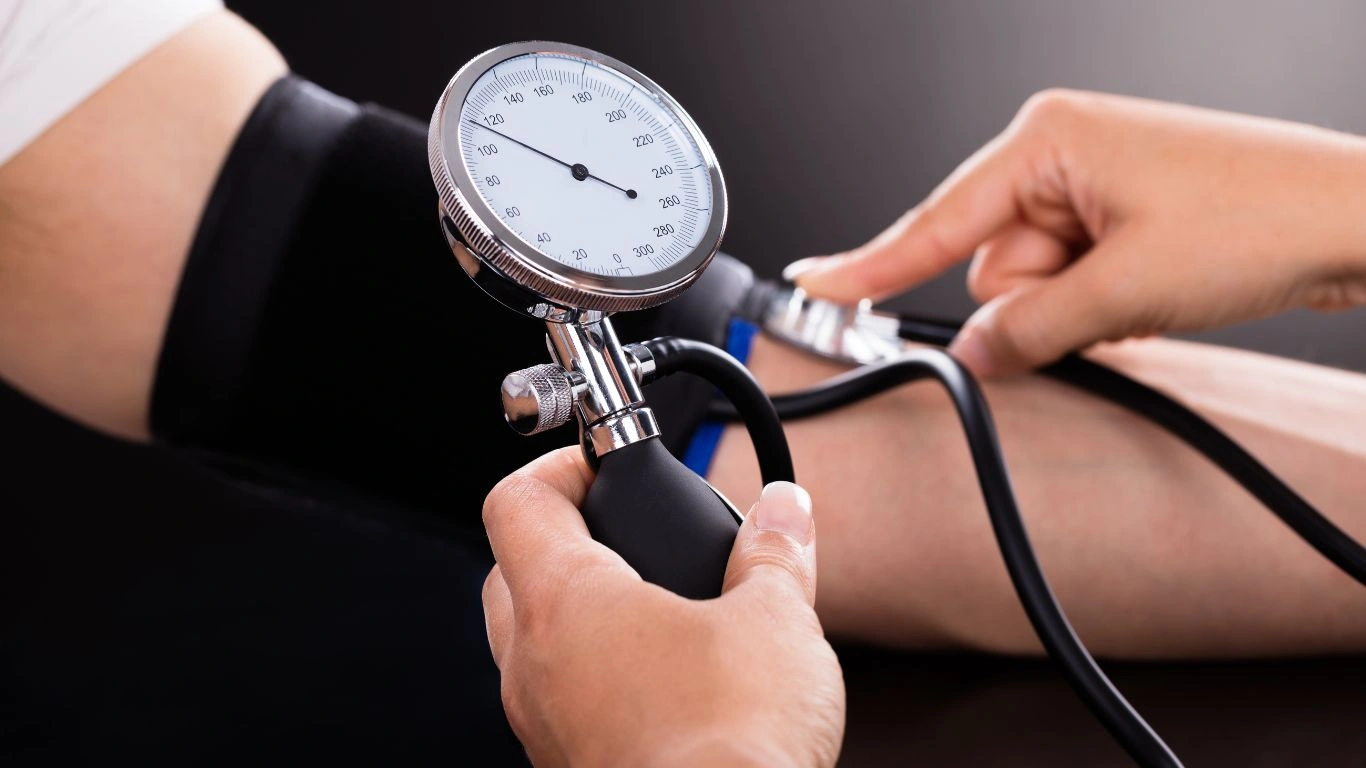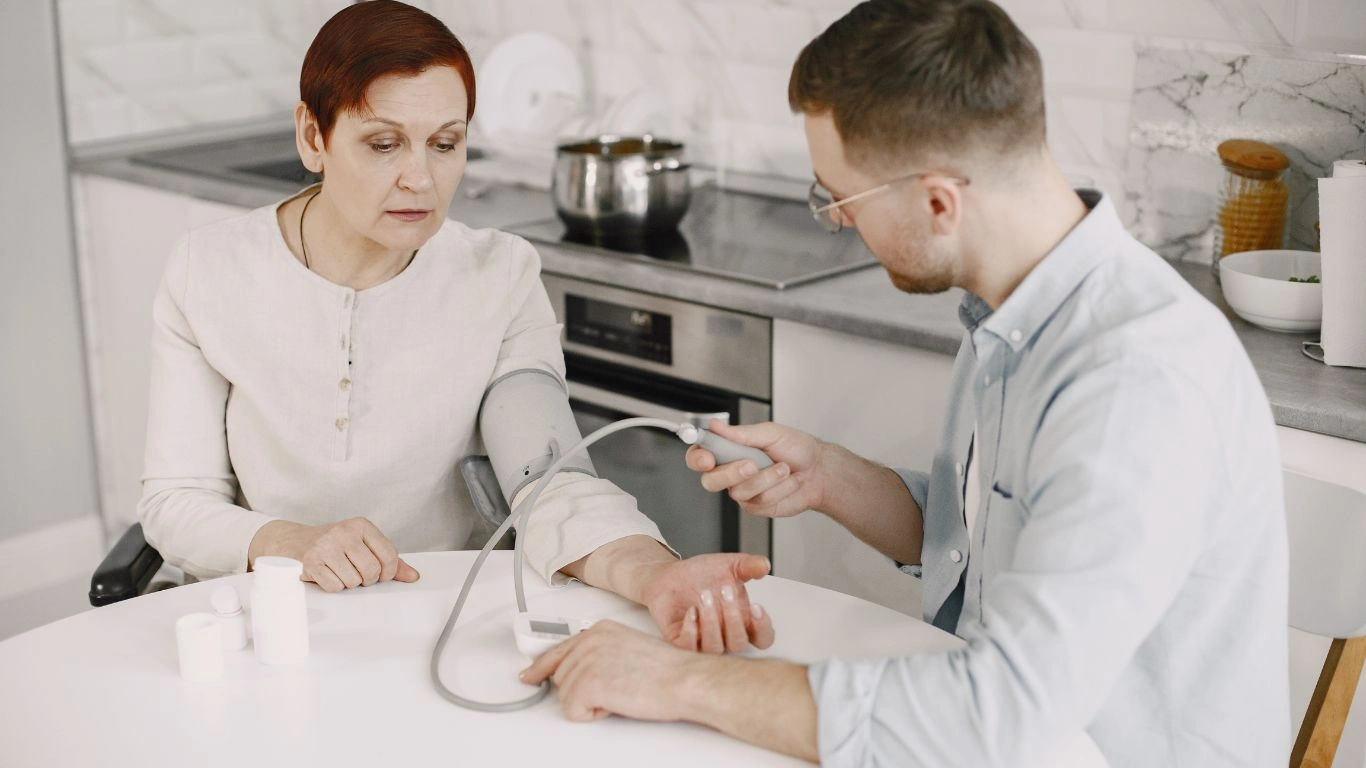Boost Your Hypertension Management with Vitamin D Deficiency Fix
As an Internal Medicine Physician specializing in Hypertension Management, I often encounter patients who are surprised to learn that their high blood pressure might not just be due to stress or genetics. One of the less talked about yet critical factors that can contribute to hypertension is vitamin D deficiency. It’s a condition that many people overlook, but I’ve seen it have a significant impact on blood pressure regulation. In fact, emerging research has shown that low levels of vitamin D may be a key player in increasing the risk of developing hypertension, and understanding this connection could be the missing piece in managing high blood pressure effectively.
Understanding Hypertension and Vitamin D Deficiency

When we think about hypertension, or high blood pressure, the first things that usually come to mind are lifestyle factors like diet, exercise, stress, and genetics. But what many don’t realize is that there are a variety of less obvious factors at play, and vitamin D deficiency is one of them. You might wonder, “Why should I care about vitamin D when it comes to my heart health?” Well, that’s exactly what I want to explore with you in this section. Let’s dive into why vitamin D matters and how it relates to hypertension.
What is Vitamin D and Why Does It Matter for Your Health?
Vitamin D isn’t just a vitamin; it’s a hormone that plays a pivotal role in various bodily functions. Most commonly, it helps regulate calcium and phosphorus in the body, supporting healthy bones and teeth. But its influence extends far beyond bone health. Researchers have found that vitamin D is involved in regulating immune system function, inflammation, and even the cardiovascular system. The interesting part? A deficiency in vitamin D has been linked to a variety of health issues, including hypertension.
Many people don’t realize they have a vitamin D deficiency, as it’s not always easy to identify. You might feel fatigued, have muscle weakness, or experience bone pain, but the connection to hypertension is often overlooked. As an internal medicine specialist, I’ve seen patients who present with high blood pressure, only to later discover that their vitamin D levels are low. It’s not just a coincidence – there’s real science behind this connection.
How Does Vitamin D Deficiency Affect Hypertension?

Now, let’s talk about how vitamin D affects blood pressure. Several studies have pointed out that low levels of vitamin D may lead to increased blood pressure by disrupting the balance of various hormones in the body. One of the most well-known pathways involves the renin-angiotensin-aldosterone system (RAAS), which plays a critical role in blood pressure regulation.
When your body has insufficient vitamin D, the RAAS system tends to go into overdrive. This leads to an increase in blood pressure. Additionally, vitamin D helps improve the function of blood vessels and promotes vasodilation (the widening of blood vessels), which in turn helps lower blood pressure. Without enough vitamin D, blood vessels become less responsive, which can lead to increased resistance and higher pressure on the arteries.
In my practice, I’ve had patients who, after adjusting their vitamin D intake and increasing sun exposure, reported noticing a significant improvement in their blood pressure readings. While vitamin D alone isn’t a magic solution, it’s clear that maintaining adequate levels of this vitamin can support better overall cardiovascular health.
Common Symptoms of Vitamin D Deficiency
How do you know if you’re at risk for a vitamin D deficiency? You might not feel any symptoms at all, especially in the early stages. However, there are a few common signs to look out for, especially if you have a history of hypertension or other cardiovascular concerns.
- Fatigue – Feeling constantly tired or drained could be a sign of low vitamin D levels.
- Muscle Weakness – Vitamin D helps maintain muscle function, so a deficiency can lead to weakness.
- Bone Pain – This is a classic symptom of low vitamin D, as it affects calcium absorption.
- Depression – Low levels of vitamin D have been linked to mood changes, including feelings of sadness or depression.
- High Blood Pressure – If your blood pressure is consistently high, it could be due to a lack of vitamin D.
If you’re experiencing any of these symptoms and have high blood pressure, it might be a good idea to talk to your doctor about getting a blood test to check your vitamin D levels. A simple blood test can help determine if your deficiency is contributing to your blood pressure issues. It’s always better to know than to guess.
Who’s at Higher Risk for Vitamin D Deficiency?

While anyone can develop a vitamin D deficiency, certain groups of people are more at risk. If you fall into one of these categories, it’s especially important to be proactive about your vitamin D levels and your blood pressure management.
- Older Adults – As you age, your skin becomes less efficient at producing vitamin D when exposed to sunlight.
- People with Darker Skin – Darker skin contains more melanin, which reduces the skin’s ability to produce vitamin D from sunlight.
- People Living in Northern Latitudes – If you live far from the equator, especially during winter months, you’re less likely to get enough sun exposure for vitamin D production.
- Those with Limited Sun Exposure – If you spend most of your time indoors or wear sunscreen consistently, you might not be getting enough sunlight to produce vitamin D.
- People with Certain Medical Conditions – Conditions like obesity, chronic kidney disease, and gastrointestinal disorders can affect vitamin D absorption or metabolism.
For these individuals, routine screening for vitamin D deficiency could be a game-changer in managing hypertension and improving overall health.
How to Check Your Vitamin D Levels and Understand the Results

If you’re reading this and wondering how you can check your vitamin D levels, it’s pretty straightforward. The most common way to determine whether you have a deficiency is through a simple blood test called the 25-hydroxyvitamin D test. This test measures the level of vitamin D in your blood and helps determine whether your levels are within the optimal range.
In my experience, many patients are surprised to find out that their vitamin D levels are lower than they thought. Even if you live in a sunny area or eat foods fortified with vitamin D, you could still be at risk for deficiency due to factors like aging, skin tone, or medication use. Getting a blood test is the only reliable way to know for sure.
So, what are the typical results? Here’s a rough breakdown:
- Deficient: Less than 20 ng/mL – If your results show this range, your body isn’t getting enough vitamin D to support overall health.
- Insufficient: Between 20-30 ng/mL – This is borderline, and while it may not immediately cause major health problems, it’s still a good idea to work on raising your levels.
- Optimal: Between 30-50 ng/mL – This range is generally considered the sweet spot for optimal health, including for regulating blood pressure.
- High: Above 60 ng/mL – While vitamin D toxicity is rare, consistently high levels can lead to other health issues, such as kidney problems. Always talk to your doctor about your results to determine the best course of action.
If your levels are low or borderline, don’t panic. There are plenty of ways to improve them, which brings us to the next section: how to naturally boost your vitamin D levels.
How to Boost Your Vitamin D Levels Naturally

Boosting your vitamin D levels doesn’t have to be complicated or require a lot of expensive supplements. In fact, there are simple, natural ways to help your body absorb more of this essential nutrient. Here’s what I recommend to my patients when they’re trying to get their vitamin D levels back on track:
1. Spend More Time in the Sun
One of the best ways to boost your vitamin D is by getting more sunlight exposure. Your skin produces vitamin D when it’s exposed to UVB rays, so just stepping outside for 15-30 minutes a day can make a big difference. I know, easier said than done sometimes, especially if you’re living in a place with long winters or if you have a busy schedule. But even small doses of sunlight, like during a lunch break walk, can be enough to help.
Of course, don’t forget about sunscreen! It’s important to protect your skin from harmful UV rays, so aim for balanced exposure. If you’re out for longer periods, make sure to use sun protection to avoid skin damage.
2. Eat More Vitamin D-Rich Foods
If getting enough sun is a challenge for you, the next best thing is to include more vitamin D-rich foods in your diet. Some of the top foods to include are:
- Fatty Fish – Salmon, mackerel, and sardines are some of the best natural sources of vitamin D.
- Egg Yolks – While egg whites are low in fat, the yolks contain a decent amount of vitamin D.
- Fortified Foods – Many foods are now fortified with vitamin D, including milk, orange juice, and some cereals.
- Mushrooms – Certain mushrooms, like shiitake, can provide a plant-based source of vitamin D, especially if they’ve been exposed to UV light.
Of course, diet alone might not be enough, especially if you have a severe deficiency. But adding these foods to your meals can support your overall intake of vitamin D.
3. Consider Supplementation
If you’re not getting enough vitamin D from sunlight or food, supplementation may be a good option. Vitamin D supplements are widely available in both pill and liquid form, and they’re relatively inexpensive. In my practice, I’ve seen many patients benefit from taking a daily vitamin D supplement, especially during the winter months or for those who have difficulty absorbing the vitamin from food.
It’s important to consult with your healthcare provider before starting any supplements, though. They can help determine the right dosage based on your current vitamin D levels and health needs. Too much vitamin D can be harmful, so it’s better to get personalized advice rather than self-prescribe.
The Role of Vitamin D in Blood Pressure Management
As we’ve established, vitamin D isn’t just a bone health superstar – it also plays a significant role in regulating blood pressure. I’ve seen firsthand how correcting a vitamin D deficiency can lead to improvements in blood pressure management, especially when combined with other lifestyle modifications. Here’s how vitamin D can help:
1. Reducing Inflammation
Inflammation is a common culprit behind many chronic conditions, including hypertension. Research suggests that vitamin D can help modulate the body’s inflammatory response, reducing the strain on your blood vessels and heart. In my experience, addressing inflammation through a combination of vitamin D supplementation, a healthy diet, and exercise can help keep blood pressure in check.
2. Supporting the Endothelial Function
The endothelium is the thin layer of cells that lines your blood vessels. It plays a crucial role in regulating blood flow and maintaining blood pressure. Vitamin D has been shown to improve endothelial function, which can help blood vessels remain flexible and responsive, allowing for better blood flow and pressure regulation. This is key for preventing hypertension from becoming a bigger issue.
3. Hormonal Balance
As mentioned earlier, vitamin D helps regulate the RAAS system, which controls blood pressure. When vitamin D is lacking, this system can become dysregulated, leading to higher blood pressure. By maintaining adequate vitamin D levels, you support the healthy functioning of this system, potentially reducing your risk of developing hypertension or making it easier to manage if you already have it.
In my practice, I’ve often recommended a holistic approach that includes vitamin D management alongside other lifestyle modifications, like weight management, reducing sodium intake, and increasing physical activity. It’s amazing how these changes can work together to keep blood pressure at healthy levels.
Combining Vitamin D with Other Lifestyle Changes for Better Hypertension Management

As we’ve explored so far, vitamin D plays a crucial role in hypertension management. But it’s important to note that vitamin D alone is not a one-size-fits-all solution. In my experience as a physician, effective hypertension management typically involves a holistic approach. Vitamin D can certainly make a difference, but combining it with other lifestyle changes can really maximize the benefits.
In my practice, I’ve seen patients who, after improving their vitamin D levels, have experienced significant reductions in blood pressure. But those results were always supported by key changes in their diet, exercise, and stress management. Let’s take a look at some of the other lifestyle adjustments you can make to help manage your hypertension more effectively.
1. Dietary Changes: A Heart-Healthy Diet
The link between what we eat and blood pressure is undeniable. A diet high in sodium, saturated fats, and processed foods can wreak havoc on your cardiovascular system, leading to elevated blood pressure. On the other hand, a heart-healthy diet that’s rich in whole foods, healthy fats, lean proteins, and plenty of fruits and vegetables can help keep your blood pressure in check.
One diet that I recommend frequently is the DASH Diet (Dietary Approaches to Stop Hypertension), which focuses on:
- Increasing potassium-rich foods (like bananas, spinach, and sweet potatoes)
- Reducing sodium intake (ideally to less than 2,300 mg per day, or about one teaspoon of salt)
- Eating more whole grains, nuts, seeds, and legumes
- Limiting added sugars and unhealthy fats (like trans fats found in many processed snacks)
Additionally, foods rich in magnesium and calcium, such as leafy greens, fish, and fortified dairy, can further support healthy blood pressure levels. Combining these dietary strategies with adequate vitamin D levels can create a robust approach to hypertension management.
2. Regular Exercise: Keeping Your Heart and Blood Vessels Strong
Exercise is another key player in managing hypertension, and it works synergistically with vitamin D to help regulate blood pressure. When you engage in regular physical activity, your heart becomes more efficient at pumping blood, which can help reduce the workload on your arteries. This leads to lower blood pressure over time.
Even modest exercise, such as brisk walking, cycling, or swimming, can be incredibly effective. I often tell my patients that the goal is consistency, not intensity. Aiming for at least 150 minutes of moderate-intensity exercise per week can make a significant difference in both lowering blood pressure and improving overall cardiovascular health.
If you’re not sure where to start, begin with 10-15 minutes of walking each day and gradually increase your time and intensity as your fitness level improves. Combining this with some vitamin D support can create a powerful synergy for your heart health.
3. Stress Management: Keeping Your Mind and Body in Balance
We can’t forget the impact that stress has on our blood pressure. In my experience, many patients don’t realize just how much stress is contributing to their hypertension. Chronic stress can trigger the release of stress hormones like cortisol and adrenaline, which can elevate blood pressure by causing your heart to beat faster and your blood vessels to constrict.
Finding ways to manage stress is crucial for maintaining healthy blood pressure. Some of the most effective stress-reducing techniques include:
- Deep breathing exercises – Slow, deep breaths can trigger your parasympathetic nervous system, helping to lower stress and blood pressure.
- Mindfulness and meditation – Practicing mindfulness allows you to be present and calm, reducing the physiological effects of stress.
- Yoga or tai chi – These practices combine gentle movement with focused breathing, which can lower stress and improve overall heart health.
- Good sleep hygiene – Chronic sleep deprivation can elevate blood pressure, so it’s essential to prioritize quality sleep each night.
Incorporating stress management techniques into your daily routine, along with proper vitamin D levels, can go a long way in stabilizing your blood pressure over time.
Working with Your Doctor to Optimize Hypertension Treatment

Finally, I always emphasize the importance of collaborating with your healthcare provider when it comes to managing hypertension. While lifestyle changes like diet, exercise, and stress management can make a huge impact, there are times when medication might be necessary, especially if your blood pressure remains elevated despite these efforts.
As an internal medicine physician, I often work with patients to tailor a treatment plan that addresses both the root causes of hypertension and its symptoms. This might include medications to help lower blood pressure, but also interventions to address underlying conditions such as vitamin D deficiency, obesity, or kidney disease.
Your doctor may also recommend regular monitoring of your blood pressure and vitamin D levels, especially if you have any of the risk factors we discussed earlier. It’s essential to keep track of your progress and adjust your treatment plan as needed. Remember, there’s no “one-size-fits-all” approach to managing hypertension, so it’s about finding the right balance for your individual health needs.
References
For more information on hypertension and its connection with vitamin D deficiency, you can visit the following sources:
Disclaimer
The information provided in this article is for informational purposes only and is not intended as medical advice. Always consult with your healthcare provider before making any significant changes to your diet, exercise routine, or medication regimen. Vitamin D supplementation and hypertension management should be tailored to your individual needs, under the guidance of a qualified healthcare professional.

Dr. Gwenna Aazee is a board-certified Internal Medicine Physician with a special focus on hypertension management, chronic disease prevention, and patient education. With years of experience in both clinical practice and medical writing, she’s passionate about turning evidence-based medicine into accessible, actionable advice. Through her work at Healthusias.com, Dr. Aazee empowers readers to take charge of their health with confidence and clarity. Off the clock, she enjoys deep dives into nutrition research, long walks with her rescue pup, and simplifying medical jargon one article at a time.






